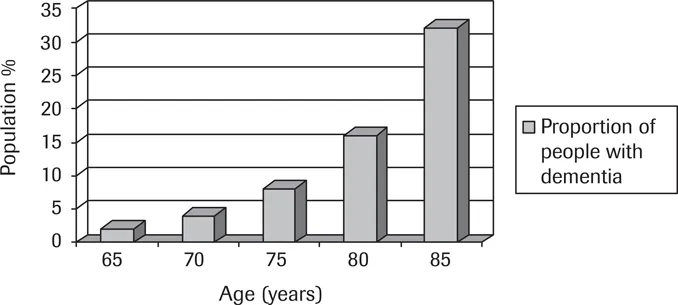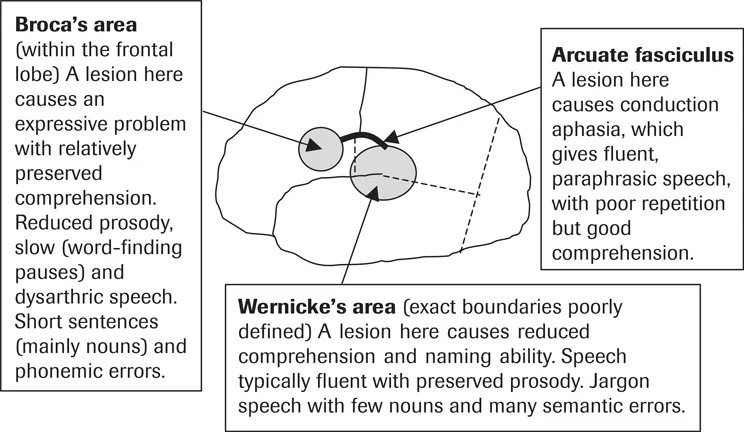
eBook - ePub
Essential Geriatrics, Third Edition
Woodford Henry
This is a test
Compartir libro
- 512 páginas
- English
- ePUB (apto para móviles)
- Disponible en iOS y Android
eBook - ePub
Essential Geriatrics, Third Edition
Woodford Henry
Detalles del libro
Vista previa del libro
Índice
Citas
Información del libro
This third edition of Essential Geriatrics has been comprehensively updated and expanded, and now includes over 200 questions and answers throughout the text in the 'best of five' format. This text specifically focuses on the key aspects of elderly care, spanning both general medicine and the particular problems encountered in geriatrics as a
Preguntas frecuentes
¿Cómo cancelo mi suscripción?
¿Cómo descargo los libros?
Por el momento, todos nuestros libros ePub adaptables a dispositivos móviles se pueden descargar a través de la aplicación. La mayor parte de nuestros PDF también se puede descargar y ya estamos trabajando para que el resto también sea descargable. Obtén más información aquí.
¿En qué se diferencian los planes de precios?
Ambos planes te permiten acceder por completo a la biblioteca y a todas las funciones de Perlego. Las únicas diferencias son el precio y el período de suscripción: con el plan anual ahorrarás en torno a un 30 % en comparación con 12 meses de un plan mensual.
¿Qué es Perlego?
Somos un servicio de suscripción de libros de texto en línea que te permite acceder a toda una biblioteca en línea por menos de lo que cuesta un libro al mes. Con más de un millón de libros sobre más de 1000 categorías, ¡tenemos todo lo que necesitas! Obtén más información aquí.
¿Perlego ofrece la función de texto a voz?
Busca el símbolo de lectura en voz alta en tu próximo libro para ver si puedes escucharlo. La herramienta de lectura en voz alta lee el texto en voz alta por ti, resaltando el texto a medida que se lee. Puedes pausarla, acelerarla y ralentizarla. Obtén más información aquí.
¿Es Essential Geriatrics, Third Edition un PDF/ePUB en línea?
Sí, puedes acceder a Essential Geriatrics, Third Edition de Woodford Henry en formato PDF o ePUB, así como a otros libros populares de Medizin y Medizinische Theorie, Praxis & Referenz. Tenemos más de un millón de libros disponibles en nuestro catálogo para que explores.
Información
PART B
Brain
CHAPTER 6
Dementia
DEFINITION
Dementia is a syndrome attributed to disease of the brain, usually of a chronic or progressive nature, in which there is disturbance of multiple brain functions. These impairments may include calculation, learning capacity, language and judgement. It is usually only considered present when there is resultant impact on social or occupational function. Consciousness is usually unaltered. There may also be deterioration in emotional control, social behaviour or motivation. In other words, it is not simply memory loss but a complex condition that affects more than one aspect of cognition.
EPIDEMIOLOGY
Approximately 8–10% of people over the age of 65 years in the Western world have dementia. The prevalence rises from around 2% of those aged 65 to more than 35% of those over 85 years (Figure 6.1).1–3 This figure represents, roughly, a doubling in prevalence for every five-year increase in age. A more positive thought is that around two-thirds of the very old do not have dementia. The number of people worldwide with dementia is predicted to double every 20 years.4 The prevalence of dementia is higher among hospitalised older people – being present in around 48% of those aged 80–89 and 66% of those aged over 90.5

In addition, there is a significant population of individuals with some clinical evidence of cognitive impairment that is not severe enough to meet the criteria for a diagnosis of dementia (‘mild cognitive impairment’ – see p. 94). However, cognitive decline is not an inevitable feature of ageing and many older people continue to function at their baseline level (see p. 14).6
Mortality rates are increased in people with dementia compared to people without this condition. Survival time is heavily dependent on age at the time of diagnosis. A study found that people aged 65–69 years survived a median of 10.7 years, those aged 70–79 survived 5.4 years, those aged 80–89 survived 4.3 years, and those over 90 survived 3.8 years.7 The overall median survival time was 4.5 years.
COGNITION
Attention
Attention is the ability to focus on a task and is determined by both concentration and arousal. It is mediated by the reticular activating system, which is a complex series of connections between the cerebral cortex, thalamus and the reticular formation (a ‘net-like’ collection of cells on the surface of the brainstem). In the presence of reduced attention other brain functions are also impaired.
Memory
Traditionally memory function has been loosely divided into short-term and long-term components. More recently, memory has been classified into four categories,8 these are outlined below.
➤ Episodic memory: The memory of specific personal events and experiences, for example what you did on holiday last year. Predominantly mediated by the medial temporal lobes and limbic system (including the hippocampus – see Figure 6.7). Insults to this system tend to affect more recently learned memories more than older ones (i.e. short-term memory is more affected than long-term memory).
➤ Semantic memory: Knowledge of the world not related to personal experiences. This includes the names of objects, for example the names of animals. This is predominantly mediated by the inferolateral temporal lobes.
➤ Procedural memory: The memory of how to perform tasks, such as riding a bike. The basal ganglia and cerebellum predominantly mediate this. It occurs at a subconscious level. It may be particularly affected in movement disorders (see Chapter 9).
➤ Working memory: Short-term (seconds to minutes) ‘keeping it in your head’. It can be phonologic (e.g. a phone number) or spatial (e.g. manipulating an object in your mind). The prefrontal cortex is important in this process along with other brain areas depending on the nature of the task. For an effective working memory, it is also necessary to be able to maintain attention/concentration.
Memories may be conscious (declarative) or non-conscious (non-declarative). Confabulation is the making-up of new ‘memories’ to replace those that have been lost. Memory impairment is common to many disorders, including dementia, delirium and depression.
Language
The dominant hemisphere encodes language. In all right-handed and most left-handed people this is the left side of the brain. The language centres are more diffuse and less well defined than traditionally thought. They include Broca’s area in the frontal lobe and Wernicke’s area at the margin of the temporal and parietal lobes. There is also a network of connections between these areas, called the arcuate fasciculus (see Figure 6.2). Paraphrasia is a term for the use of abnormal or incorrect words. These can be semantic (similar categories, e.g. ‘dog’ for ‘cat’), phonemic (similar sounds, e.g. jar for car) or neologistic (made up words, e.g. strub for car). Prosody is a term for the melodic characteristics of speech including intonation, stress and cadence (rhythm). Anomia is a term for a naming deficit (e.g. cannot say the name for a pen). Anomic dysphasia is also called ‘word block’. With this disorder people typically stop mid-sentence. Its presence is associated with space-occupying lesions within the dominant lobe. Progressive aphasia is a term for a slowly worsening non-fluent aphasia secondary to left frontotemporal degeneration (plus apraxia). Dysgraphia (impaired writing) and dyslexia (impaired reading) are usually associated with dysphasia.

Visuospatial skills
Visuospatial deficits tend to be more severe with non-dominant hemisphere damage but are not unique to it. Constructional ability involves input from occipital (visual), parietal (association areas link visual and motor pathways) and frontal (motor) lobe functions.
Errors observed include perseveration (repetition of lines/shapes) and ‘closing in’ (merging objects together). Constructional ‘apraxia’ can occur with damage to either hemisphere. When affecting the left over-simplification of copied objects is seen, with the right an over-elaboration or ‘explosion’ of constituent parts is more typical. ‘Neglect’ is a term used for spatial inattention, which can cause visual or sensory extinction (stimuli are preferentially detected by one side of the body despite intact sensory systems).
Executive function
The frontal lobes perform executive functions, which relate to personality (drive, motivation, inhibition) and behaviour. Lesions here lead to failures with learning from errors, poor goal setting, intrusion of unwanted thoughts, perseveration (becoming fixed on one idea), the inability to switch tasks (also called ‘set-shifting’, leading to ‘stimulus-bound’ behaviour), reduced empathy, and poor sequencing of tasks. Affected individuals typically have reduced interest in their environment and poor social drive leading to impaired interpersonal relations and hygiene.
Apraxia
Apraxia is a high-level motor deficit. It is mainly seen with left hemi...